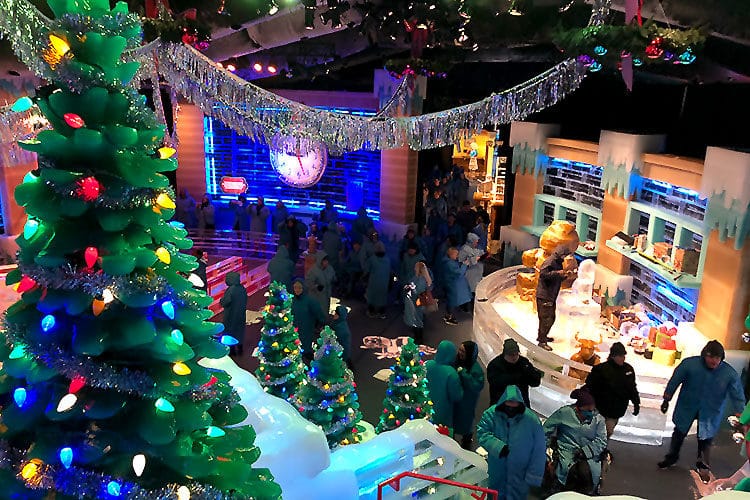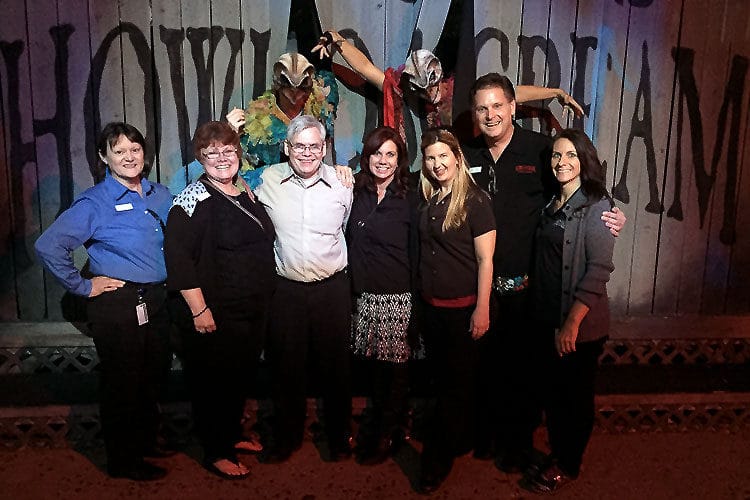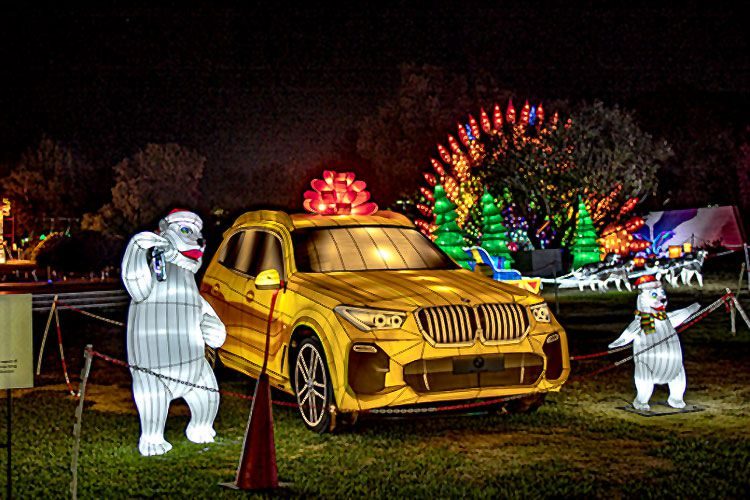Seasonal Entertainment IS Full Time
My family believed Christmas started the day after Thanksgiving on Black Friday. Every Macy’s Thanksgiving Day Parade finale (the arrival of Santa Claus) reinforced the Christmas frenzy. It must be Christmastime…Santa’s here!
When I worked in retail, Christmas began in mid-July, when the first load of ornaments, decorations, and Holiday sweaters arrived. I theorize the “Christmas in July” sales are a cover to clear space in the stockrooms.
When I met a Christmas ornament designer, I discovered that his season begins 24 to 36 months out. Upper management must approve the designs in time for overseas fabrication. Then, the completed baubles are shipped back to the States to make it onto the store shelves for the holiday season. Designers predict (or at least select) the trends and colors for Christmases two to three years in advance!
So, when I started working in theme parks, “starting early” seemed natural to me. Throughout my life, preparations for “the Holiday Season” began earlier and earlier. It only made sense that starting early applies to Halloween, Independence Day, or any other seasonal event. Seasonal entertainment is a full-time gig. The focus may shift throughout the process, but we should make progress year-round.
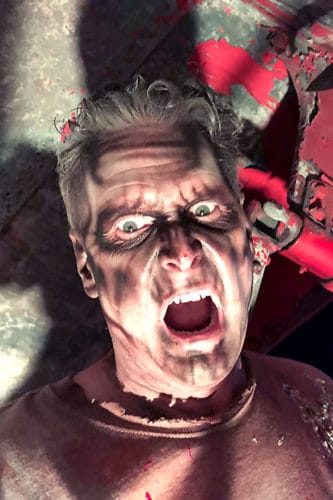
“Why are we doing these festivals…aren’t we busy enough?”
Most people in the theme-park industry ask this question, and it’s a valid one: “If a company has a strong core product, why should it add seasonal experiences?” There are several answers.
The first has to do with guests. Many studies claim we’re shifting to an experience-based economy. This means that more and more young families are on the lookout for the next new thing. They want unique experiences that are only available for a limited amount of time. This “fuse” gives guests a specific reason to visit a theme park now. Without the time limit, many guests have the idea they’ll go when they get around to it.
Seasonal events are also more cost-effective than large-capital investments. Building a roller coaster boosts attendance only for the year it debuts. For a fraction of the cost, a seasonal event can offer something new year after year.
If seasonal events differ from the park’s core brand, this creates an opportunity to introduce the park to a new audience. The family-friendly park’s gritty Halloween event, for example, brings in guests not attracted to their day product. Seasonal events often broaden the audience base.
Another beneficial by-product of doing seasonal events is the opportunity to field-test new products, concepts, or procedures without making a long-term commitment. Many of the parks and zoos I’ve worked with use their Halloween and Christmas events to try out new food offerings, new attendance-tracking software, and even new external vendors. The best ideas on paper don’t always work well in the field, so the only way to test something is to do it. The limited run of a festival or event is the perfect opportunity to try new things.

“Why are we talking about Halloween in February?”
Once the decision is made to work on seasonal events year-round, it’s important to communicate clearly what will be involved. Make sure everyone from the front-line employee to the CEO understands that planning and construction for any seasonal event can’t start the week or month before it opens. One way to reduce any confusion is to identify and internally publish the milestones for each seasonal festival in the works. When reality rears its ugly head, you can alter the plan. At least you’ll know if you’re ahead of, right on, or totally behind schedule. Milestones help managers plan their operational schedules (including hiring additional staff members if needed) months in advance. This makes it easier for them to approve vacations and delegate assignments. It’s even beneficial for the front-line employee. They can mentally prepare for the long nights or merchandise floor moves associated with these kinds of festivals.
The most important reason to create and monitor milestones is to identify everyone’s responsibilities. I sometimes hear managers say things like, “Wow, this Halloween event snuck up on me! I’m nowhere near ready!” This statement confuses me, since this annual event has happened for the past 10 years…and always in September and October. In fairness, daily operations can become all-consuming at times, so, by creating and openly monitoring event milestones, everyone gets gentle reminders regularly.
I’d also suggest having weekly or even bi-weekly meetings throughout the year that include all of the stakeholders and/or participating departments. Make clear that these meetings won’t run longer than an hour, and document the meetings with both a pre-meeting agenda and post-meeting notes. It’s important to include who attended these meetings in the notes. This will add another layer of responsibility as well as ownership to the process.
You might argue that you don’t have enough time to do all of this. My experience has shown that the investment of 60 minutes per week (plus the time it takes to write and distribute the agendas and notes) is more than worth the investment. Not only does it create a unified multidisciplinary team, but it also reduces wasted time and money to “fix” things later in the process. If everyone is on board early, these mistakes get caught before they happen. Therefore, my response is, “You don’t have enough time NOT to do all of this.”
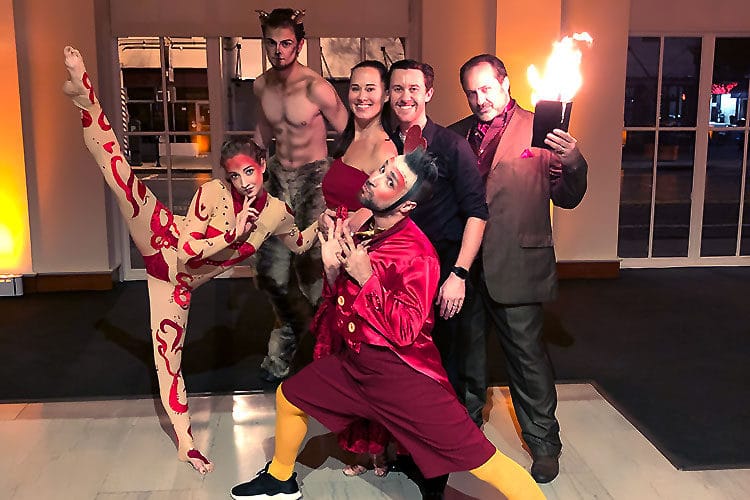
“How can we divide and conquer?”
Theme-park seasonal events are significantly more complicated than they appear. Some larger events are as much work as opening a seasonal park while operating another park in the same location. The transition from Halloween to Christmas is even more challenging. During this time of year, many parks and zoos are running their day product, taking down their Halloween event, and installing their Christmas festival all at the same time. How does anyone tame this beast?
The first step to maintain control (not to mention the sanity of the staff) is through a well-communicated plan. The milestones and regular meetings should take care of that effectively. The next step is to divide and conquer. Over the last 30 years, I’ve seen this division of time and effort done in several ways.
- By Discipline: Have a team dedicated to each discipline needed for the event. This may include a Technical Team, a Casting and Training Team, an Operational Team, etc. This approach helps identify best practices between the events. The Casting Team may discover that some of “Santa’s Elves” will make great Trolls for the Halloween event, or the Technical Team may learn they can install all of their lighting fixtures in semi-permanent locations and then refocus and reprogram for each seasonal activity.
- By Holiday: Create a Christmas Team, a Summer Team, a Halloween Team, etc. This plan works to create experts for each event. It also allows those with a passion for a specific holiday to work on what they enjoy. If team members are passionate, they often work much harder and without complaints. My experience has shown that this “seasonal silo” approach can be advantageous, but it requires a strong commitment from upper management. The park leaders must appropriately divide resources, staff, and time among the teams.
- By Year: Some larger organizations have been able to create teams that “leap-frog” through the calendar. One team develops and implements the seasonal offerings for the even-numbered years, and the other does the same for the odd-numbered years. This gives the teams plenty of lead time. It also allows one team to observe, evaluate, and learn from the other team’s product. This system of checks and balances helps the quality multiply—there’s always a concerned and educated set of eyes identifying pitfalls and perfection. With this (or any) set up, the most applicable form of evaluation is the “Start-Stop-Continue” approach. In its purest form, Start means doing things that aren’t being done but should be, Stop means doing things that are being done but shouldn’t be, and Continue means going forward with things that are working well. This overly simplistic initial review will help the planning for future events and is especially helpful when the teams are alternating years.
By Hiring External Vendors: This is a common approach when companies are “testing the water.” They aren’t ready to commit to multiple seasonal events throughout the year, but they see the advantages of doing so. By bringing in outside vendors, the company doesn’t need to increase its staff or even split its focus. A turnkey production company that already has experience in the seasonal-event industry allows the park or zoo or museum to hit the ground running with a full-blown event the first year. This is usually the easiest option for park management, but this “plug-and-play” experience comes at a cost. Every member of the production company’s team will need to be paid, plus the company will need to pay for insurance and payroll PLUS make a profit. This means the host organization will be paying for things the guests don’t see. For many organizations, this hands-off approach is appealing, but it’s essential to recognize that it comes with a premium price tag.
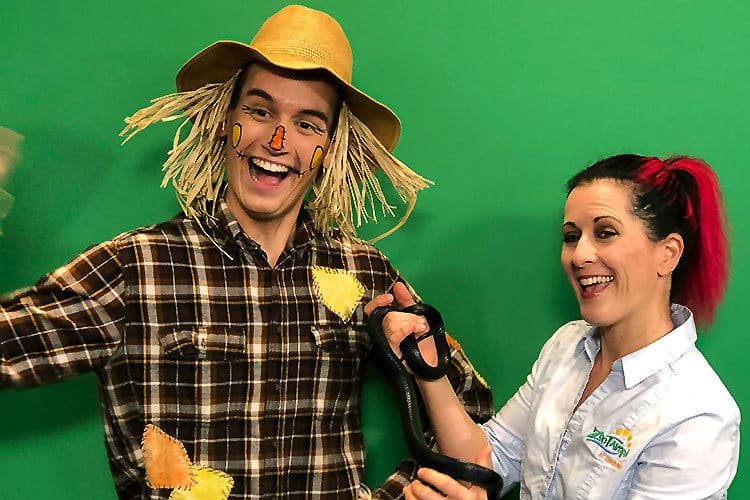
“We still need to keep daily operations running!!!”
No matter how the implementation responsibilities are divided, the park still needs to operate more hours or with additional elements. This means either increasing labor hours per staff member (overtime) or adding dedicated operational staff to the event. My experience suggests a hybrid. With creative scheduling and appropriate event staffing, parks can add the right number of seasonal employees and pair them with experienced team members. This approach helps reduce the training time for new hires while taking advantage of experience. This combined approach also helps minimize overtime and may even expand the pool of potential full-time employees. Whatever the decision about how this should be handled, it’s important to give both the day product and the event equal attention. The guests will expect both to be perfect.
Once the positions are filled, it’s important to train the event staff. Even long-time staff may need additional training. It’s dangerous to assume that a stellar merchandise cashier will make a good street vendor without some preparation. Give the entire team the chance to succeed by providing them proper training and clarifying expectations.
Don’t forget wardrobe for the operational staff. If uniforms are required, make sure enough are available for the expanded staff. Another option is to have uniforms or grooming standards that are directly tied to the festival. Event-specific “Staff” tee-shirts are cost-effective, comfortable to wear on extended nights, and can even act as marketing if worn while traveling to and from work. Plus, team members love event-specific tee-shirts and often collect them from one year to the next.
Tee-shirts are just one suggestion for keeping the staff motivated throughout the event. Other recommendations include free “snacks” in break rooms, perfect-attendance awards, safety raffles, dark-night parties, and secret-shopper rewards. The minimal overall cost for these employee incentives will help ensure the event remains staffed throughout. It’s challenging to find and train replacement staff once the event has started, especially during the Christmas and Halloween seasons. After you find your seasonal staff, it’s important to make them feel wanted and retain them. These small investments in time and money will make for a significantly more successful run.
All of these staffing suggestions have an associated cost. It’s essential that this cost is put into the budget and remains in the budget. Hiring, training, and retention are often the first items dispensed with when spending gets out of control. Think carefully about eliminating these relatively inexpensive line items. They can make or break nearly any event.
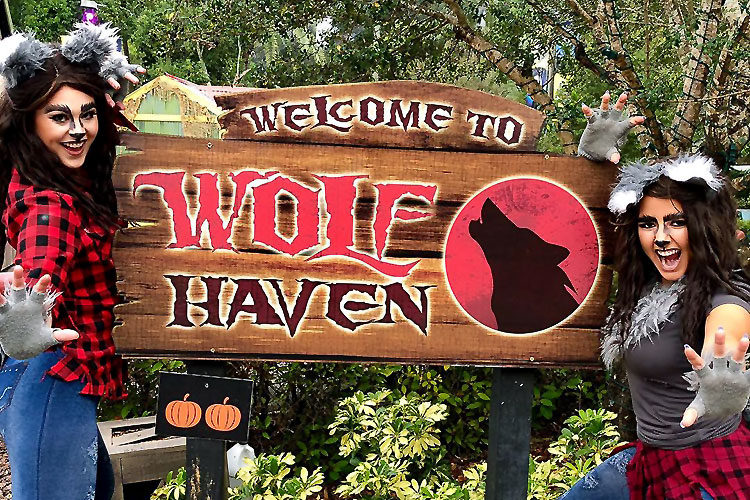
“How can we afford to open a completely new event every quarter?”
If a zoo or theme park decides to do multiple events throughout the year, it’s important to find efficiencies. Identify investments that have multiple uses. This is especially true with lighting and audio assets. It’s important to do the right research before spending capital dollars. It’s usually better to invest in versatile lighting equipment with easily programmable controls. This way, the same fixtures can be used to light a dank, dark dungeon or a fun-filled snow-play area. Purchasing more small audio speakers versus a concert rig usually works out best. (If a concert is part of the event, rent the big-stadium sound gear.) The right research will lead to smart purchases, and smart purchases of versatile equipment will lead to a stronger bottom line.
It may also be financially beneficial to have dedicated event spaces or a permanent building used only for seasonal offerings. If an organization can leave the haunted house or winter photo opportunity installed year-round, it won’t need to spend the money to strike, store, and reinstall that scenery. If this isn’t an option, finding a way to install one experience over another is a viable alternative—the walls of the Santa’s house are installed behind the cramped hallway of the cursed Egyptian tomb. This makes the changeover from one holiday to the next as simple as removing the walls. Each organization will need to evaluate what works best for their situation.
There may even be efficiencies with casting. If the employee-retention activities suggested earlier are implemented, the Summer staff of stilt-walkers may be the first in line to audition for Christmas. People will return to seasonal jobs year after year IF they continue to enjoy the work and feel they’re compensated fairly. This commitment (by both the employee and the company) is built over time, but it can greatly reduce the cost of recruitment and make training far more efficient.
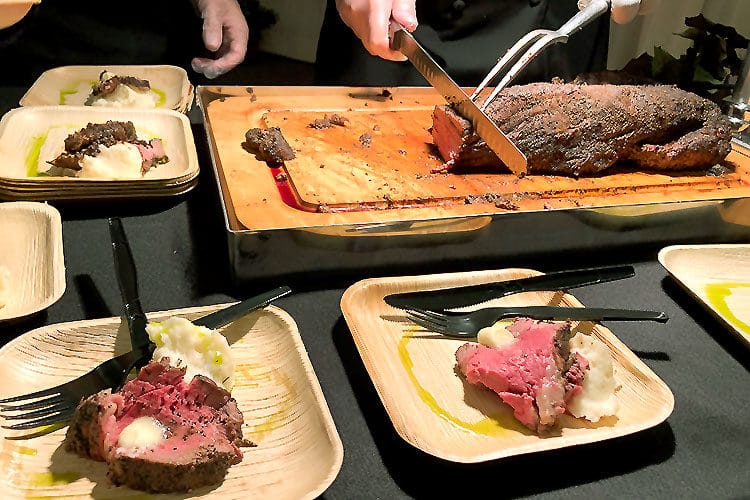
“How do we get bigger and better for the next seasonal event?”
After a successful seasonal festival, the guests’ expectations are elevated. This means the next event needs to be as good or better than the last one AND, if it’s “as good,” it needs to be “different.”
Evaluation is essential to growth and improvement. In addition to the “Start-Stop-Continue” approach to observation mentioned earlier, it’s also important to understand the guests’ point of view. One practical way to gather this information is through guest surveys. These provide immediate, gut responses and give a quick snapshot of the guests’ state of mind in the moment. They can be issued at the end of the night, online, or even as guests exit a specific experience. Focus groups are another useful tool. These usually take place well after the event and can be used not only to review the previous experience but to pitch new ideas for the coming year.
Evaluating this guest data can be a daunting task. Many parks use professional companies to help better understand guest feedback. The important thing to remember is that this data is a tool, not the gospel. It can best be used in conjunction with first-hand observation, attendance statistics, financial reports, and even social-media reviews to plan upcoming events.
Assuming there’s a desire to continue the seasonal event another year, the evaluation feedback can help determine the next chapter. Think of the content or theme like an epic novel. The first chapter leads to the next and the next. Each year, a seasonal event can create the next chapter, and this approach has a few benefits. The guests are already familiar with the characters and the “backstory.” The scenic and costuming can be altered and reutilized. Some elements may even be repositioned to create a whole new perspective. The film industry has successfully used this concept for decades. Continuing the story year after year isn’t only cost-effective but builds strong brand identity.
Successful seasonal events and festivals don’t just pop up for a month. They require year-round planning, installation, and commitment. These experiences are only seasonal to the guests. For those who put them together, they’re just as much a part of the core product as a hot new roller coaster or a state-of-the-art animal habitat. The only difference is they’re only open 15 to 30 days out of the year.
About The Author
Scott Swenson
For over 30 years, Scott Swenson has been bringing stories to life as a Writer, Director, Producer and Performer. His work in Theme Park, Consumer Events, Live Theater and Television has given him a broad spectrum of experiences. After 21 years working with SeaWorld Parks and Entertainment as the Director of Production, Scott formed Scott Swenson Creative Development LLC. Since then he has been writing live shows, creating and implementing themed festivals and developing communication based training classes. Much of Scott’s work has focussed on seasonal entertainment. He was co-creator and Creative Leader for the first 15 years of the “Howl-O-Scream” event at Busch Gardens Tampa, during which time he wrote and implemented over 50 haunted houses, shows and scare zones. From 2014 to 2017, he was the Writer and Creative Director for the historically based atmospheric theatre piece, “The Vault of Souls”.

